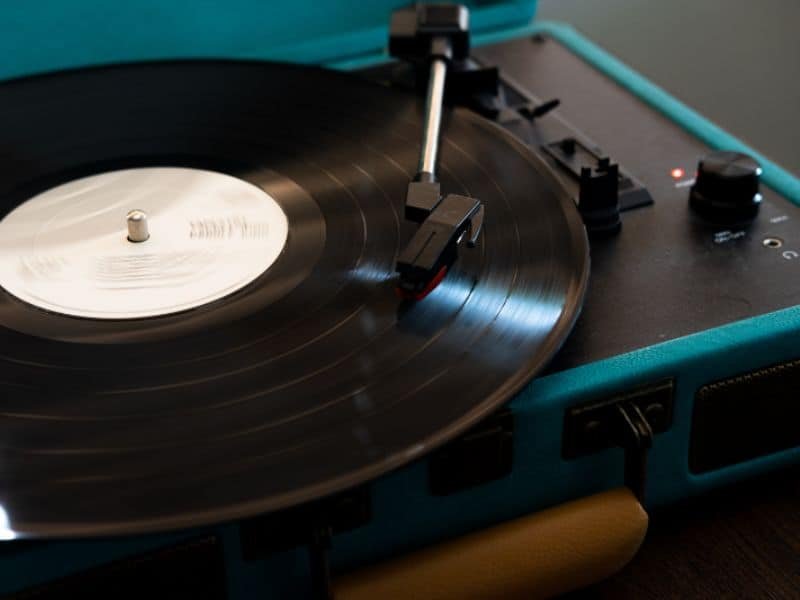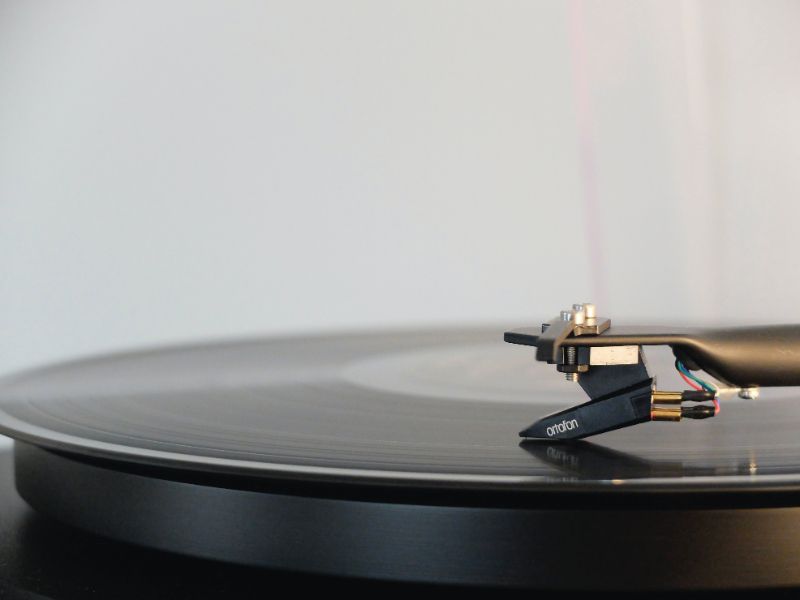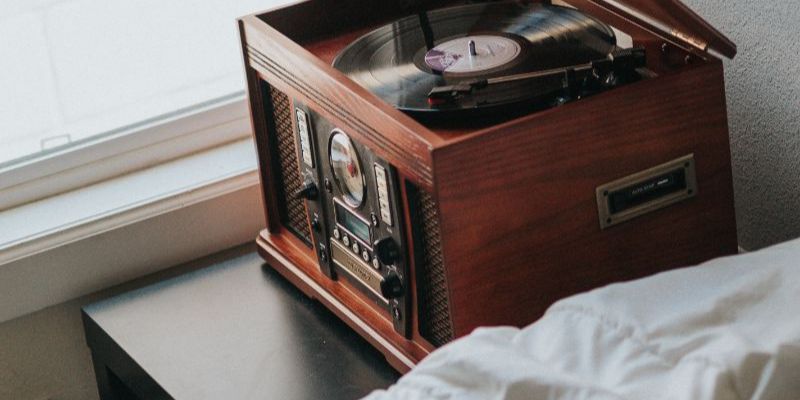While trends come and go and technology evolves, it seems that record players have made a comeback. In 2020, UK vinyl sales were the highest they had been since the early ’90s! This is excellent news for parents with boxes full of vinyl records collecting dust for 30-odd years.
Before the 1970s, near enough every music-loving household had a record player. While you can’t hit ‘shuffle’ or skip songs on them, how they work is still pretty clever. This guide will take you through everything you need to know about record players, including how they work.
The History Of Record Players
The history of the record player is an interesting one. But, unlike many other music-playing devices, they have pretty much stayed the same in design.
1877: Thomas Edison and The Phonograph
Way back in 1877, Edison used his knowledge of sound waves to create the ‘phonograph’. This device consisted of a brass cylinder wrapped in tinfoil. When initiated by hand, the phonograph would vibrate, causing the needle to record sound.
1887: Emile Berliner and The Gramophone
Ten years later, in 1887, German inventor Emile Berliner revisited Edison’s findings. He created a similar device called the Gramophone, which was made with hard rubber rather than tinfoil.
20th Century: The Rise Of Record Players
By the mid-20th century, most households owned a Gramophone. This popularity lasted until the 1980s, when cassette tapes started taking over.
Important Parts Of A Record Player
Now that you know more about the record player’s evolution, it’s time to pick apart its features. Learning about the different parts of a turntable will make it easier to understand how it works. The four main components of a record player are:
- Turntable
- Stylus
- Tonearm
- Cartridge
- Amplifiers
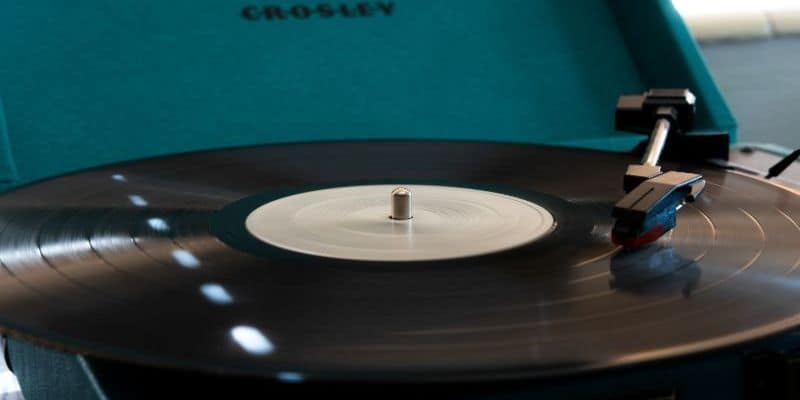
Turntable: The turntable is the part where the record sits. The turntable is typically made from plastic or metal and covered with a rubber mat to avoid scratches. At the centre of the turntable sits a metal rod, which holds the record in place while it spins.
Stylus: Also known as the needle, the stylus sits in the record’s grooves as it spins around.
Tonearm: The tone arm is the movable part of the record player. It keeps the stylus in place, ensuring that it follows the record’s grooves.
Cartridge: The cartridge is responsible for making the sound. It translates the vibrations from the stylus and transforms them into electrical signals.
Amplifiers: The amplifiers take the electrical signals from the cartridge and transfer them to the speakers. Some record players have built-in amps, but older versions may need to connect to a separate device.
How Record Players Work
From the turntable to the stylus, cartridge to amp, each part of the record player has an important role to play. While our previous points briefly summed up how a record player works, it’s now time to go on the full journey. Let’s establish exactly what happens when using a record player, from start to finish.
The Science Behind Record Players
Similarly to Edison’s main point of focus with the phonograph, record players work by converting sound vibrations into electrical signals. This is why, to understand how record players work, you need to know about sound waves. So, what are sound waves, exactly?
A sound is created by vibrations that travel through the air. They work in a ‘wave’ motion, hence the name ‘sound wave’. As these sound waves move around, they transfer energy from one source to another. In this case, the sound wave takes energy from the record player, bringing it to your ear.
When the energy reaches your ear, the vibrating particles make your eardrum vibrate. The greater the vibration, the louder the sound.
The grooves you see on a vinyl record are ‘imprints’ of a sound wave. As the record player works through the grooves, the vibrations follow suit. This, in turn, tells the sound how to behave when in the air.
Using Your Record Player
It’s time to go on the journey we previously spoke about. Dust off your vinyl and follow these directions for the full experience:
Put The Record On The Turntable
Place the record on the turntable, ensuring it sits snugly onto the metal rod. If necessary, turn the record player on. It should start to spin.
Place The Stylus Onto The Record
Gently place the stylus onto the record, ensuring that it fits into the grooves nearest to the edge. You may hear the infamous ‘crackle’ as it gets into motion.
Listen Carefully!
Once the stylus meets the record, the rotating turntable will guide it through the grooves.
As the stylus moves through the grooves, it creates tiny bounces that transmit to the bar. Every time the stylus and bar press against each other, it wobbles ever-so-slightly, creating an electric signal. This electric signal creates the sound waves we spoke about earlier.
The electric signal is then fed to the player’s amplifier, making the final sound that you hear.
If you have a modern-day record player, this process might work slightly differently. Some players use tiny electrical coils that are guided by a magnet, instead. The magnet pushes up and down on the coil whenever the stylus moves, creating the same electrical signals.
Lift The Stylus Once Done
If you wish to stop the music or have come to the end of the record, gently lift the stylus to stop the sound. Lifting the stylus first will prevent it from scratching the record as it slows down.
There you have it – the full journey of how a record player works, from start to finish. While the idea of transmitting vibrations into electrical signals may sound confusing, we hope this process has cleared everything up for you. Now you’ve got it working, ensure you’re caring for your record player. It’s safe to say that, although very old, record players are incredibly clever. Thanks, Edison!
How Vinyl Records Are Made
Understanding how record players work covers the listening side of things, but what about before that? How is it possible for a vinyl record to hold such music? Spoiler alert: that’s all about to be revealed.
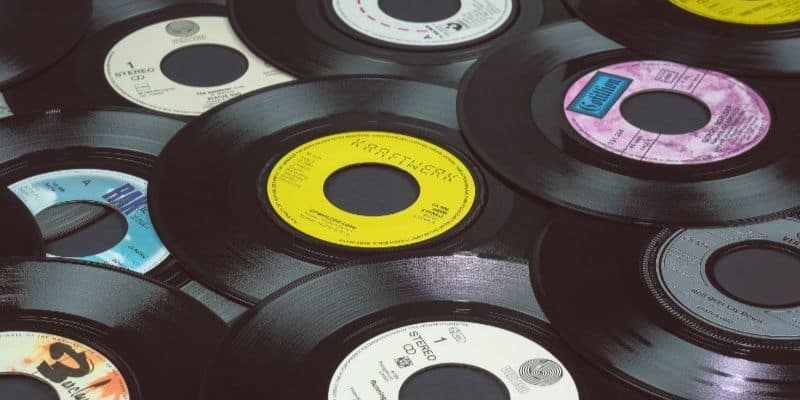
The making of a vinyl record all starts in the studio. Just like modern-day recordings, the artist and production team will work on creating epic music. Once a master recording has been finalised, a ‘lacquer’ is placed onto a record-cutting machine. Electric signals travel from the master recording to the cutting head, enabling a needle to etch grooves into the lacquer.
The lacquer then gets sent to a production team, who coat it in metal to create a ‘metal master’. The metal master is then used to create a ‘stamper’, which holds negative versions of the original recording. Vinyl is then pressed between the stamper, duplicating the master recording as many times as needed.
Finally, the disc is stiffened in cold water. Once stiff, you can play it!
Reflecting On Scientific Success
Record players originally came onto the scene to allow for diversity, promoting artists and encouraging listeners to try out new sounds. Their success was greater than anyone could have ever imagined, truly shaping the music industry into what it is today. Who would have thought that knowledge surrounding vibrations and electrical signals could create something so outstanding?
